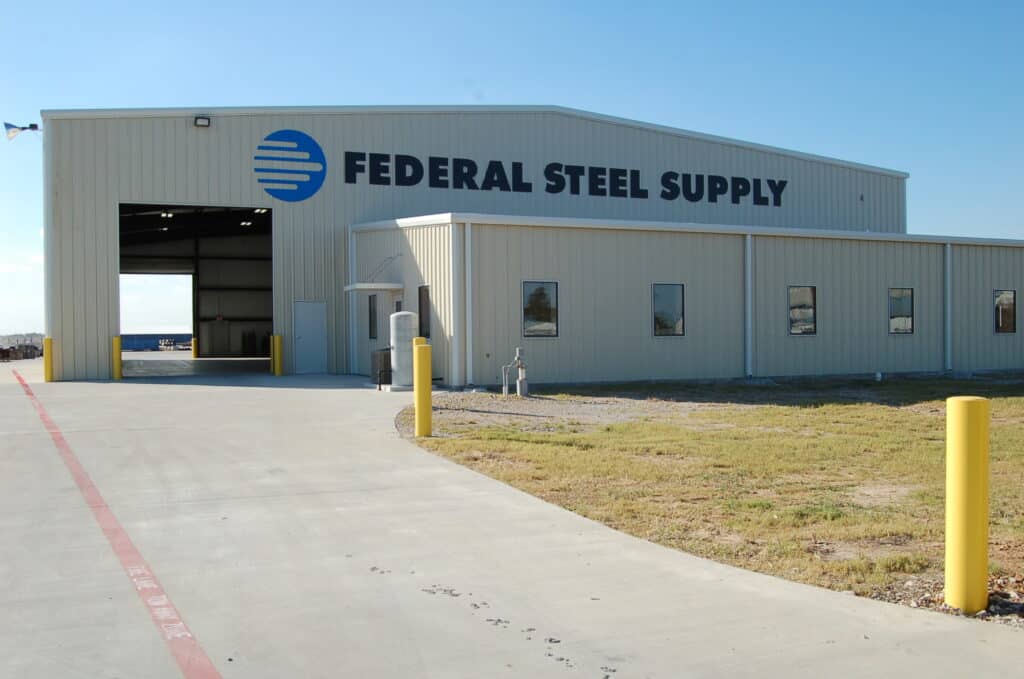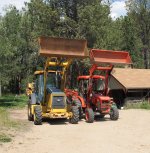You are using an out of date browser. It may not display this or other websites correctly.
You should upgrade or use an alternative browser.
You should upgrade or use an alternative browser.
Why not sugar water in tires instead of beet juice?
- Thread starter etpm
- Start date
- Views: 52307
More options
Who Replied?
/ Why not sugar water in tires instead of beet juice?
#71
ning
Elite Member
Sugar water doesn't help or hinder corrosion. Sugar water will sightly reduce freezing point but doesn't markedly affect density (1.06).
Rimguard claims their product weighs 10.7-11.0 pounds per gallon, or 1.29-1.33 density while being non-corrosive.
I don't know if plain water (density 1.0) is considered corrosive by these metrics; a wheel will eventually rust with water in the tire (I'm guessing water/alcohol and water/antifreeze blends will too, not sure if rimguard has anti rust capabilities or if it's just not seriously corrosive like calcium chloride).
Rimguard claims their product weighs 10.7-11.0 pounds per gallon, or 1.29-1.33 density while being non-corrosive.
I don't know if plain water (density 1.0) is considered corrosive by these metrics; a wheel will eventually rust with water in the tire (I'm guessing water/alcohol and water/antifreeze blends will too, not sure if rimguard has anti rust capabilities or if it's just not seriously corrosive like calcium chloride).
5030
Epic Contributor
- Joined
- Feb 21, 2003
- Messages
- 28,964
- Location
- SE Michigan in the middle of nowhere
- Tractor
- Kubota M9000 HDCC3 M9000 HDC
Never had a tractor with filled rears and I'm on my 10th and 11th Kubota's. I used external weights on all of them including the 2 I own now. Kubota offers as an option, cast centers and I go with them.
fidowanttobe
Platinum Member
Road gear with a 140-ish HP FWA JD with filled tires is a mushy, half inflated, bouncy house.
My 28 HP CUT rides like a go cart with just air.
Yeah, I know.
Never had an opportunity to compare apples to apples, but I'm curious.
My 28 HP CUT rides like a go cart with just air.
Yeah, I know.
Never had an opportunity to compare apples to apples, but I'm curious.
rScotty
Super Member
- Joined
- Apr 21, 2001
- Messages
- 9,654
- Location
- Rural mountains - Colorado
- Tractor
- Kubota M59, JD530, JD310SG. Restoring Yanmar YM165D
rScotty,
I wasn't sure whether to reply or not but here goes.
I too would like to know where the roll centers are on the M59 and have asked Kubota for that information with no response. Therefore, I am working from the position of every pound that I can place below the plane that runs thru the axels is a pound or percentage of total weight that is below the likely roll centers. I conclude the roll centers are probably above the plane that runs thru the axels based upon the significant bodies of weight ( backhoe, engine, front end loader frame ) are mostly above the plane of the axels. Since you have a M59, you know what kind of weights are involved. I consider moving 5% of weight below the axles to be a significant improvement in reducing the likelihood of roll over.
I have some idea of where the for-aft roll center is since I experienced a light rear end when grapple is maximally loaded. That is why loading the rear tires was a significant improvement in for-aft stability.
M59 travel speed is less than 5 mph when loaded and frequently 2-3 mph when really loaded so impacts are very low speed and there is little lost displacement. Kind of like gently squeezing a balloon. The tire carcass, when rolling slowly over a rock, bulges slightly at the point of contact and there appears to be very little internal pressure increase. However, I will afix a pressure guage to the tire stem and try a low roll over several different size rocks next time I am running the machine. Will be interested in learning the outcome.
Interesting. Let us know if the pressure spikes.
It occurs to me that although the center of mass of the liquid is very slightly below the center of the axle (because of partial fill), I'd be surprised if any normal fluid fill moves the CG of the fluid down very far - maybe not even as far as the bottom of that axle. My guess is still that fluid fill doesn't move overall CG very far either, and as far as the CG of the fluid itself goes, I wonder if that fluid CG might still be within the axle diameter. Not sure it matters, but at least that fluid CG calc is one we don't need Kubota for.
Do you you agree that the critical calculation for side tipping is the change in distance from the ground up to the CG? It also seems to me that as you say, most of that mass is above the axle - although I haven't gotten out there and really taken a look at it. Hmm.... not sure of the significance of the axle here. How did we get on to that in the first place? The axle is a convenient point of reference for working out the center of mass of the rear end is about all it seems to me.
Now for fore & aft tipping there is no doubt that more weight aft does help. Just like putting a 3000 lb boulder in the front bucket enables lots more backhoe abuse - probably enough extra abuse to break things.
BTW. ability to withstand deliberate abuse is THE BIG DIFFERENCE between the M59 and a real commercial TLB. Counterweighting an M59 could break things, but counterweighting the JD310 probably won't.
Last edited:
M59
Platinum Member
- Joined
- Oct 27, 2014
- Messages
- 557
- Location
- Fairview NC
- Tractor
- Kubota M59 TLB/ Mahindra Max 24 TLB/ KX-080-5
rScotty,Interesting. Let us know if the pressure spikes.
It occurs to me that although the center of mass of the liquid is very slightly below the center of the axle (because of partial fill), I'd be surprised if any normal fluid fill moves the CG of the fluid down very far - maybe not even as far as the bottom of that axle. My guess is still that fluid fill doesn't move overall CG very far either, and as far as the CG of the fluid itself goes, I wonder if that fluid CG might still be within the axle diameter. Not sure it matters, but at least that fluid CG calc is one we don't need Kubota for.
Do you you agree that the critical calculation for side tipping is the change in distance from the ground up to the CG? It also seems to me that as you say, most of that mass is above the axle - although I haven't gotten out there and really taken a look at it. Hmm.... not sure of the significance of the axle here. How did we get on to that in the first place? The axle is a convenient point of reference for working out the center of mass of the rear end is about all it seems to me.
Now for fore & aft tipping there is no doubt that more weight aft does help. Just like putting a 3000 lb boulder in the front bucket enables lots more backhoe abuse - probably enough extra abuse to break things.
BTW. ability to withstand deliberate abuse is THE BIG DIFFERENCE between the M59 and a real commercial TLB. Counterweighting an M59 could break things, but counterweighting the JD310 probably won't.
View attachment 752254View attachment 752254
Thankyou for interesting point-counterpoint instead of flaming/ ranting. The mark of a gentlemen.
I have not taken measurements of the fluid level relative to rim and thus distance to interior of carcass in contact with ground, overall tire diameter when loaded (filled), nor carcass volume but based upon ratio of bare tire weight of 280 Lbs and fluid fill weight of 589ish Lbs, where CG of the bare tire on rim is certainly within the axle's diameter and the CG of the fluid fill is clearly below the axle's diameter by roughly half the distance of the unfilled upper portion. The next calculation involves the ratio of the masses relative to their centers of mass resulting in the loaded wheel center of mass moving below the axel diameter which I believe is roughly 2 inch but no more than 3 inch.
I will agree that the critical calculation is the distance from the ground to the roll center between port and starboard of the total machine in whatever dynamic configuration it is in. The machine's two roll centers do not both have to pass thru the CG point. One affects ( changes) the roll centers by changing the CG ( Center of Mass ). The axles are important and the plane that passes thru the front and rear axles is important because the action of tipping a machine onto its side has to act the axle which then loads the rim and then the tire carcass. Tipping only occurs when the port and starboard roll center is above and out beyond the end of the axle and or the point the tires make contact with the ground. This is what happens when people balance a car on two wheels and keep is upright. Notice they are controlling the roll center by steering the front wheel in contact with the ground.
I am meticulous about machine maintenance since a well maintained machine works better, is less tiring, and lasts much longer. Cost of ownership stuff and old adage about always work with sharp tools, you are less likely to hurt yourself by forcing it. It gets fed frequently with only molybdenum disulfide grease. My more used tractor tool is in pic.
I agree a JD310 and commercial backhoes in general are less likely to break when deliberately abused but they are also heavier and have higher working pressures so I could also be convinced they break at the same frequency as lesser machines given they are both worked to the same degree within or beyond their capacity.
I also know someone who bought a brand new 410, used it hard in gritty liquid environment, never greased any part of the machine including the swing frame main pin, and trashed a perfectly good machine in 6 months and it went for almost scrap price.
I will post back here when I am able to run the pressure test. Don't expect an answer on this until late July or early Aug.
Enjoying the chat. Hope others find it useful.
Attachments
KennJ
Bronze Member
- Joined
- May 15, 2022
- Messages
- 61
- Location
- Humboldt County, CA
- Tractor
- Branson 2515H, Kubota RTV x900W
Sugar water doesn't help or hinder corrosion. Sugar water will sightly reduce freezing point but doesn't markedly affect density (1.06).
Rimguard claims their product weighs 10.7-11.0 pounds per gallon, or 1.29-1.33 density while being non-corrosive.
I don't know if plain water (density 1.0) is considered corrosive by these metrics; a wheel will eventually rust with water in the tire (I'm guessing water/alcohol and water/antifreeze blends will too, not sure if rimguard has anti rust capabilities or if it's just not seriously corrosive like calcium chloride).

Stainless Steel & the Sugar Industry - Federal Steel Supply
In order to transform sugar cane into white sugar, it must undergo a complex refining process. Brazil and India are two of the major players in the sugar
 www.fedsteel.com
www.fedsteel.com
From what I know, sugar is acidic and does contribute to corrosion of carbon steel, though not as much as salt. That being said, in a sealed environment with water, air and sugar corrosion would be much worse than just air, and somewhat worse than just water. Best to go with something non-corrosive. As you say, water causes rust, which is corrosion.
Of course, you could always add some cherry syrup; who wouldn't want to drive around on two giant cherry Slurpees in the wintertime!
rScotty
Super Member
- Joined
- Apr 21, 2001
- Messages
- 9,654
- Location
- Rural mountains - Colorado
- Tractor
- Kubota M59, JD530, JD310SG. Restoring Yanmar YM165D
All good points - and a break will give us a chance to think about the tipping problem & accumulate some numbers.
Even if the calculation shows that the CG is moved enough to significantly affect tipping or roll, there is still the question of fluid vs iron for weight.
From use - not from calculations - the 310SG seem to me that it is not just stronger due to size, it is also built to handle stresses far beyond the self-generated ones. It is simply more resistance to abuse & less likely to hurt itself in the hands of a novice.
The M59 doesn't have that safety factor against abuse. Still,we prefer the M59 to do most jobs. Plenty of power, and it's superior hydraulic controls coupled with operator visibility & the HST+ transmission make it more user friendly.
I hear some projects calling my name. See you in August.
rScotty

Even if the calculation shows that the CG is moved enough to significantly affect tipping or roll, there is still the question of fluid vs iron for weight.
From use - not from calculations - the 310SG seem to me that it is not just stronger due to size, it is also built to handle stresses far beyond the self-generated ones. It is simply more resistance to abuse & less likely to hurt itself in the hands of a novice.
The M59 doesn't have that safety factor against abuse. Still,we prefer the M59 to do most jobs. Plenty of power, and it's superior hydraulic controls coupled with operator visibility & the HST+ transmission make it more user friendly.
I hear some projects calling my name. See you in August.
rScotty

M59
Platinum Member
- Joined
- Oct 27, 2014
- Messages
- 557
- Location
- Fairview NC
- Tractor
- Kubota M59 TLB/ Mahindra Max 24 TLB/ KX-080-5
KennJ and ning,
Stainless Steel & the Sugar Industry - Federal Steel Supply
In order to transform sugar cane into white sugar, it must undergo a complex refining process. Brazil and India are two of the major players in the sugarwww.fedsteel.com
From what I know, sugar is acidic and does contribute to corrosion of carbon steel, though not as much as salt. That being said, in a sealed environment with water, air and sugar corrosion would be much worse than just air, and somewhat worse than just water. Best to go with something non-corrosive. As you say, water causes rust, which is corrosion.
Of course, you could always add some cherry syrup; who wouldn't want to drive around on two giant cherry Slurpees in the wintertime!
Sugar by and in itself is not inherently corrosive but its by products are and the by products are hard to prevent. There actually is a case when flowing sugar solutions are corrosive and I covered that in an earlier comment.
Rather than go thru the chemistry myself, I am referring you to the following website where the acidification ( souring ) process is explained.
Why sugar solution/sugarcane juice becomes sour when kept for certain time?
I stir-dissolve some sugar in a cup of water and then keep it open for certain time (say a few hours), when I taste it I feel that it has became sour. I have observed the same thing many times when I
The above would be the process whereby sugar rich constrained solutions ( inside a tire ) could cause corrosion.
A earlier commenter made comment about the Russians coming and stealing your tires because you ended up making vodka. He wasn't far off.
Enjoy the day
KennJ
Bronze Member
- Joined
- May 15, 2022
- Messages
- 61
- Location
- Humboldt County, CA
- Tractor
- Branson 2515H, Kubota RTV x900W
Thanks for the explanation!KennJ and ning,
Sugar by and in itself is not inherently corrosive but its by products are and the by products are hard to prevent. There actually is a case when flowing sugar solutions are corrosive and I covered that in an earlier comment.
Rather than go thru the chemistry myself, I am referring you to the following website where the acidification ( souring ) process is explained.

Why sugar solution/sugarcane juice becomes sour when kept for certain time?
I stir-dissolve some sugar in a cup of water and then keep it open for certain time (say a few hours), when I taste it I feel that it has became sour. I have observed the same thing many times when Ichemistry.stackexchange.com
The above would be the process whereby sugar rich constrained solutions ( inside a tire ) could cause corrosion.
A earlier commenter made comment about the Russians coming and stealing your tires because you ended up making vodka. He wasn't far off.
Enjoy the day

